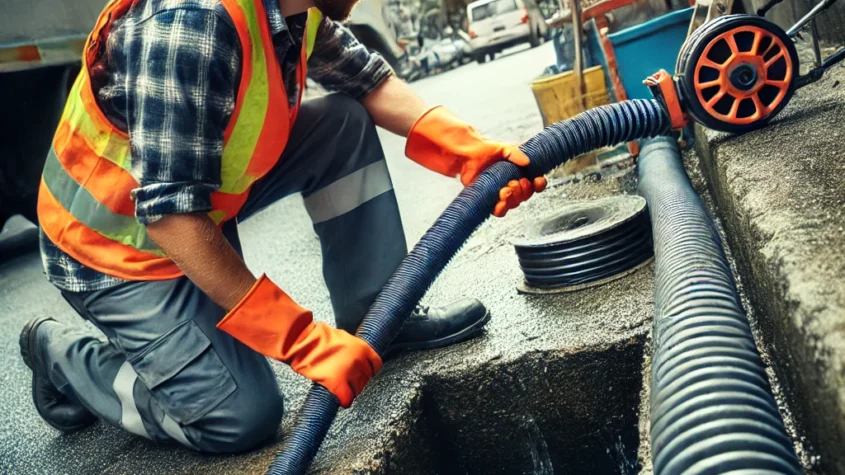
Clogged drains can cause significant disruptions in daily life, leading to unpleasant odors and potential water damage. A drain cleaning plumber specializes in removing blockages and ensuring that plumbing systems operate smoothly. With their expertise, they can quickly identify issues and employ effective techniques to restore proper flow, saving homeowners from costly repairs down the line.
Understanding when to call a drain cleaning plumber is crucial. Many people may attempt DIY solutions, but these often provide only temporary relief. In contrast, a professional can use advanced equipment and methods to tackle stubborn clogs and prevent future occurrences, offering peace of mind and longevity for plumbing systems.
Maintaining clear drains is essential for a well-functioning home. Regular visits from a drain cleaning plumber can help avoid emergencies, minimize inconvenience, and enhance the overall efficiency of plumbing systems. Homeowners will benefit greatly from being proactive rather than reactive when it comes to their plumbing needs.
Drain Cleaning Basics
Understanding how drain systems work, recognizing the common causes of clogs, and implementing safety measures are key components of effective drain cleaning. This section provides essential information to help address drain issues efficiently.
Understanding Drain Systems
Drain systems are designed to transport wastewater away from plumbing fixtures. They consist of pipes, traps, and vents. Typical materials for these systems include PVC, cast iron, or abs plastic.
Pipes vary in diameter, which can affect flow rates. Traps prevent sewer gas from entering homes and catch debris that could cause clogs. Vents allow air to enter the system, promoting proper drainage by balancing pressure.
Homeowners should familiarize themselves with their specific systems. Knowing the layout can aid in identifying issues and preventing future problems.
Common Causes of Clogs
Clogs can result from various materials accumulating in drain lines. Common culprits include:
- Hair: Often found in bathroom sinks and showers.
- Soap Scum: Builds up in pipes, especially in tubs.
- Grease: Clogs kitchen drains as it solidifies.
- Food Waste: Small particles can create blockages in garbage disposals.
Regular maintenance and knowledgeable use of disposals can minimize these issues. It is advisable to avoid flushing inappropriate items such as wipes or paper towels to prevent drain problems.
Safety Measures for Drain Cleaning
Implementing safety measures is crucial during drain cleaning tasks. First, protective gear, including gloves and goggles, should be worn to shield against harmful bacteria and chemicals.
When using chemical drain cleaners, it’s important to read labels carefully. Follow manufacturer instructions to avoid damage to pipes or injury.
For mechanical methods, like snakes or augers, ensure proper handling to prevent injury. Work slowly and be cautious of hidden obstructions in the pipe. Having a bucket nearby can help manage any spills during the process.
Professional Drain Cleaning Services
Professional drain cleaning services utilize systematic methods and specialized equipment to maintain and restore drainage systems. Their expertise ensures effective solutions for various blockages and issues within plumbing systems.
Inspection Techniques
Effective drain cleaning begins with thorough inspection techniques. Professionals use methods such as:
- Video Camera Inspection: A high-resolution camera is inserted into the drain to visually identify blockages, pipe damage, or root intrusions. This technique provides real-time feedback and precise problem locations.
- Hydrostatic Testing: This evaluates pressure levels in the system, helping determine leaks or weaknesses.
These techniques allow for accurate diagnoses, reducing the need for extensive excavation and enabling more targeted cleaning procedures.
Approaches to Drain Cleaning
Professionals employ several approaches to drain cleaning, tailored to the specific situation. Common methods include:
- Hydro Jetting: This method uses high-pressure water jets to clear stubborn blockages. It is effective against grease, hair, and scale buildup.
- Snaking: A plumbing snake or auger breaks through clogs and clears passages by spinning and pushing through debris.
- Biological Treatments: Enzyme-based solutions help break down organic waste over time. This approach is eco-friendly and safe for pipes.
Each technique has distinct advantages, ensuring comprehensive solutions for different drainage issues.
Tools and Equipment Used
The tools and equipment used by professionals enhance the effectiveness and safety of drain cleaning. Key tools include:
- Drain Snakes and Augers: Handheld or powered devices that reach deep into pipes to dislodge clogs.
- Hydro Jetters: Machines that emit high-pressure water streams, capable of clearing even the toughest blockages.
- Camera Inspection Equipment: Allows for visual documentation and assessment of drain conditions.
Each piece of equipment is essential for thorough cleaning, enabling technicians to perform their jobs efficiently while minimizing damage to plumbing systems.
Understanding Local SEO Pricing Packages: A Complete Guide for Small Businesses
If you’re running a small business, you’ve probably heard about local SEO. But…









